Consistently voted the happiest country in the world, the little nation of Bhutan is set at the far eastern end of the Himalayas, between India and China. Bhutan only began to open its doors to outsiders in the 1970s and still has a strict sustainability policy regarding tourism. As a result, it has retained a deep cultural authenticity and has preserved its environment admirably, making it one of Asia’s most beguiling and unforgettable destinations. Highlights include incredible forts and temples perched on sheer mountain cliffs, a rich (predominantly Buddhist) culture, and spectacular scenery – ranging from temperate sub-tropical plains and valleys cloaked with dense forest to lofty sub-Alpine mountains capped with snow.
Resting in a lush green valley of hills and rice paddies, Bhutan’s capital city of Thimphu is the country’s commercial and religious hub, and is known for its interesting fusion of ancient and modern elements. Historical architecture and ancient traditional elements juxtapose with contemporary buildings and sensibilities. The imposing, stately 350-year-old Tashicho Dzong Fortress is currently used as the administrative centre of the county, and is also the king’s office. Visitors can explore the gold-spired Memorial Chorten, a revered Buddhist shrine; see the intricate frescoes and slate carvings at Simtokha Dzong; and discover the Bhutanese way of live through exhibits and folk dances at the fascinating National Folk Heritage Museum. The city bustles with cafes, clubs and restaurants, thereby offering the best of old- and new-world charms.
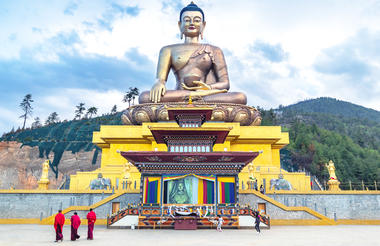
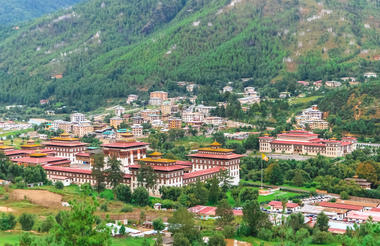
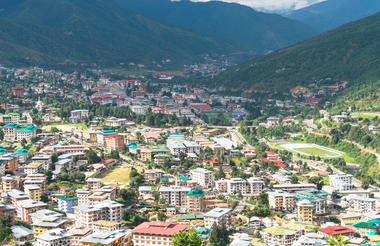
The little village of Gangtey is located in the beautiful Phobjikha Valley, within the Wangdue Phodrang District in Central Bhutan. Set at an altitude of 3000 metres, and tucked away in an ancient glacial valley of lush greenery and cultivated farmlands, it serves as the perfect base from which to explore the spectacular surrounding wilderness. The village is home to several fascinating sites, namely the 17th-century Gangtey Monastery, the only Nyingmapa monastery on the western slopes of the Black Mountains. In winter, visitors can spot endangered black-necked cranes, which migrate from the Tibetan Plateau and the vast plains of Central Asia to this warmer corner of the world. The lucky few can enjoy the famous Tshechu Festival, a lively and colourful annual celebration featuring a vibrant mix of games, costumes, dancing and drumming.
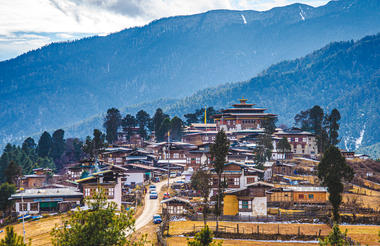
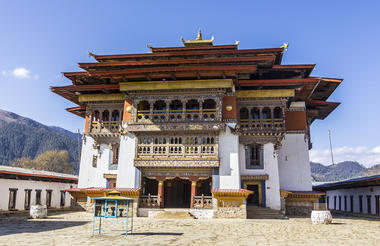
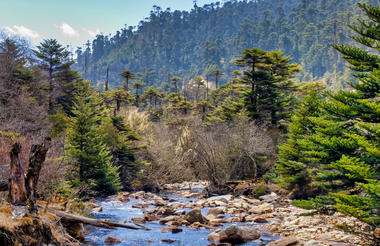
Dubbed the mini Switzerland of Bhutan, Bumthang is a patchwork of rural farmlands that form a splendid tapestry in the valleys of Bumthang. Forested hills meet the valley floor, offering a lush landscape for exploring the surrounding natural environment. Look out for Burning Lake, a quiet riverside spot offering an ideal opportunity to sit and meditate. Bumthang is made up of four valleys: Ura, Chumey, Tang and Choekhor, each with its own dialect. Ancient temples and monasteries abound in this beautiful environment. Visit Jambay Lhakhang, one of the 108 monasteries built by Tibetan King Gampo to subdue evil spirits in the Himalayan region. Other sights include the Kurje Lhakhang monastery and the local brewery.
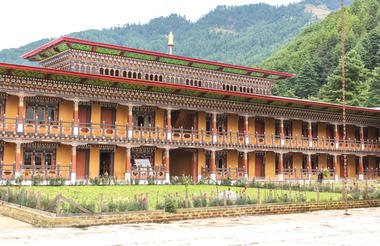
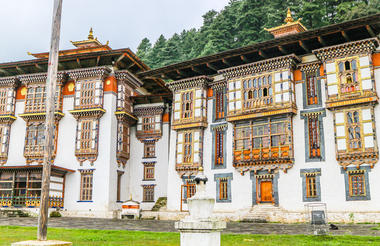
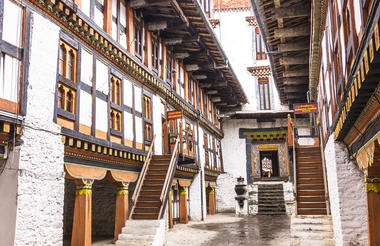
Sitting pretty at an altitude of 2200 metres above sea level, Paro is the gateway to beautiful Bhutan. Planes make an incongruous sight, flying low as they prepare for landing in this Himalayan oasis, home to many of Bhutan's oldest temples and monasteries. Resting on the banks of the Paro River, there is plenty to observe in this traditional town, from quaint farmhouses scattered across the valley to emerald green terraced paddy fields . For outdoor enthusiasts and adventure seekers alike, a great day excursion is to trek to the famous Tiger's Nest Temple, on the face of a sheer 1000-metre-high cliff. This acclaimed temple houses the National Museum, which shows hundreds of ancient Bhutanese artefacts and artwork. It's advised to do this at the end of a trip, once travellers have acclimatised.









